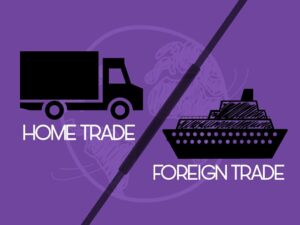Balance of Trade vs Balance of Payment
Welcome to our comprehensive guide on the difference between balance of trade and balance of payment. In this article, we will explore the definitions, examples, uses, and key differences between these two concepts. Understanding these concepts is essential for anyone interested in international economics and trade. So let’s dive in.
What is Balance of Trade?
The balance of trade refers to the difference between the value of a country’s exports and the value of its imports during a specific period. It is also known as the trade balance. The balance of trade is calculated by subtracting the value of imports from the value of exports. A positive balance of trade occurs when a country’s exports exceed its imports, resulting in a trade surplus. On the other hand, a negative balance of trade occurs when a country’s imports exceed its exports, resulting in a trade deficit.
Examples of Balance of Trade:
1. Country A exports $100 billion worth of goods and imports $90 billion worth of goods. The balance of trade for country A is a surplus of $10 billion.
2. Country B exports $80 billion worth of goods and imports $100 billion worth of goods. The balance of trade for country B is a deficit of $20 billion.
What is Balance of Payment?
The balance of payment is a comprehensive record of all economic transactions between residents of a country and the rest of the world during a specific period. It includes the balance of trade, as well as other transactions such as the balance of services, balance of income, and balance of capital transfers. The balance of payment is divided into two main components: the current account and the capital and financial account.
Examples of Balance of Payment:
1. Country A has a trade surplus of $10 billion, a net inflow of $5 billion in foreign investment, and receives $2 billion in foreign aid. The balance of payment for country A would be a surplus of $17 billion.
2. Country B has a trade deficit of $20 billion, a net outflow of $3 billion in foreign investment, and pays $1 billion in foreign aid. The balance of payment for country B would be a deficit of $24 billion.
Differences between Balance of Trade and Balance of Payment
| Difference Area | Balance of Trade | Balance of Payment |
|---|---|---|
| Definition | The difference between the value of exports and imports of a country. | The comprehensive record of all economic transactions between residents of a country and the rest of the world. |
| Scope | Only includes trade in goods. | Includes trade in goods, services, income, and capital transfers. |
| Components | Exports and imports | Current account and capital and financial account |
| Measurement | Value of goods | Value of goods, services, income, and transfers |
| Focus | Trade balance | All economic transactions |
| Impact | Influences employment and domestic industries | Affects the overall balance of payments and exchange rates |
| Objective | To measure the competitiveness of a country in international trade | To assess the overall economic relationships with other countries |
| Policy Implications | Affects trade and tariff policies | Influences monetary and fiscal policies |
| Trade Surplus/Deficit | Surplus if exports exceed imports, deficit if imports exceed exports | Surplus if capital inflows exceed outflows, deficit if outflows exceed inflows |
| Indicators | Trade balance ratio | Current account balance, capital account balance |
Conclusion:
In summary, the balance of trade focuses solely on the difference between exports and imports of goods, while the balance of payment provides a comprehensive record of all economic transactions. The balance of trade influences employment and domestic industries, while the balance of payment affects the overall balance of payments and exchange rates. Policy implications also differ, with the balance of trade influencing trade and tariff policies, and the balance of payment influencing monetary and fiscal policies.
People Also Ask:
Q: What is the importance of balance of trade?
A: The balance of trade is important as it reflects the competitiveness of a country in international trade and can influence employment, domestic industries, and trade policies.
Q: How is balance of payment calculated?
A: The balance of payment is calculated by adding the current account balance and the capital and financial account balance.
Q: How does a trade deficit affect the economy?
A: A trade deficit means that a country is importing more than it is exporting, which can lead to a decrease in domestic industries, job losses, and increased foreign debt.
Q: How does the balance of payment impact exchange rates?
A: The balance of payment, particularly the capital and financial account, can affect exchange rates as capital flows in and out of a country can influence the demand for its currency.
Q: How are trade surplus and trade deficit related to the balance of payment?
A: A trade surplus corresponds to a capital inflow, which is considered a surplus in the balance of payment. Similarly, a trade deficit corresponds to a capital outflow, which is considered a deficit in the balance of payment.




